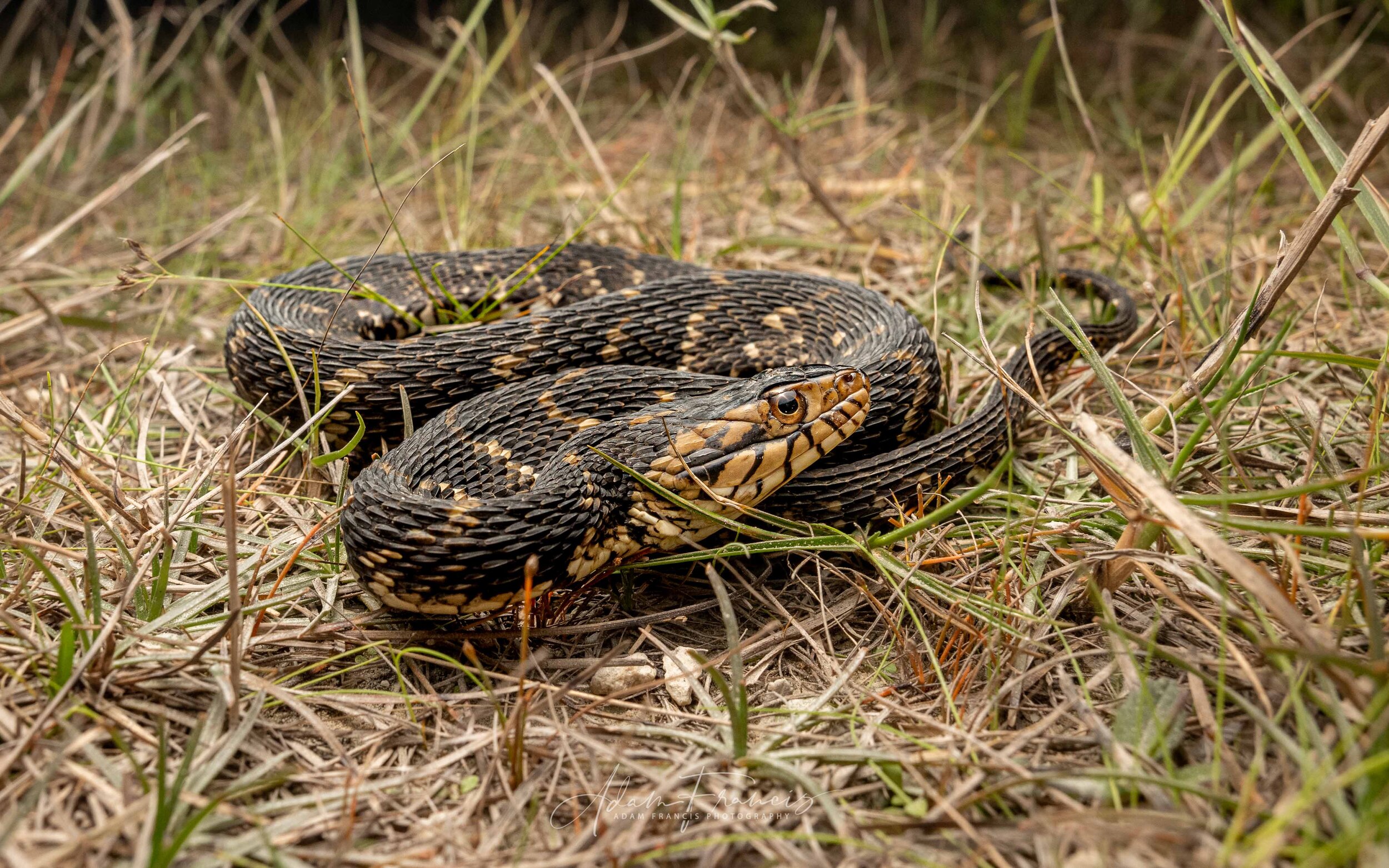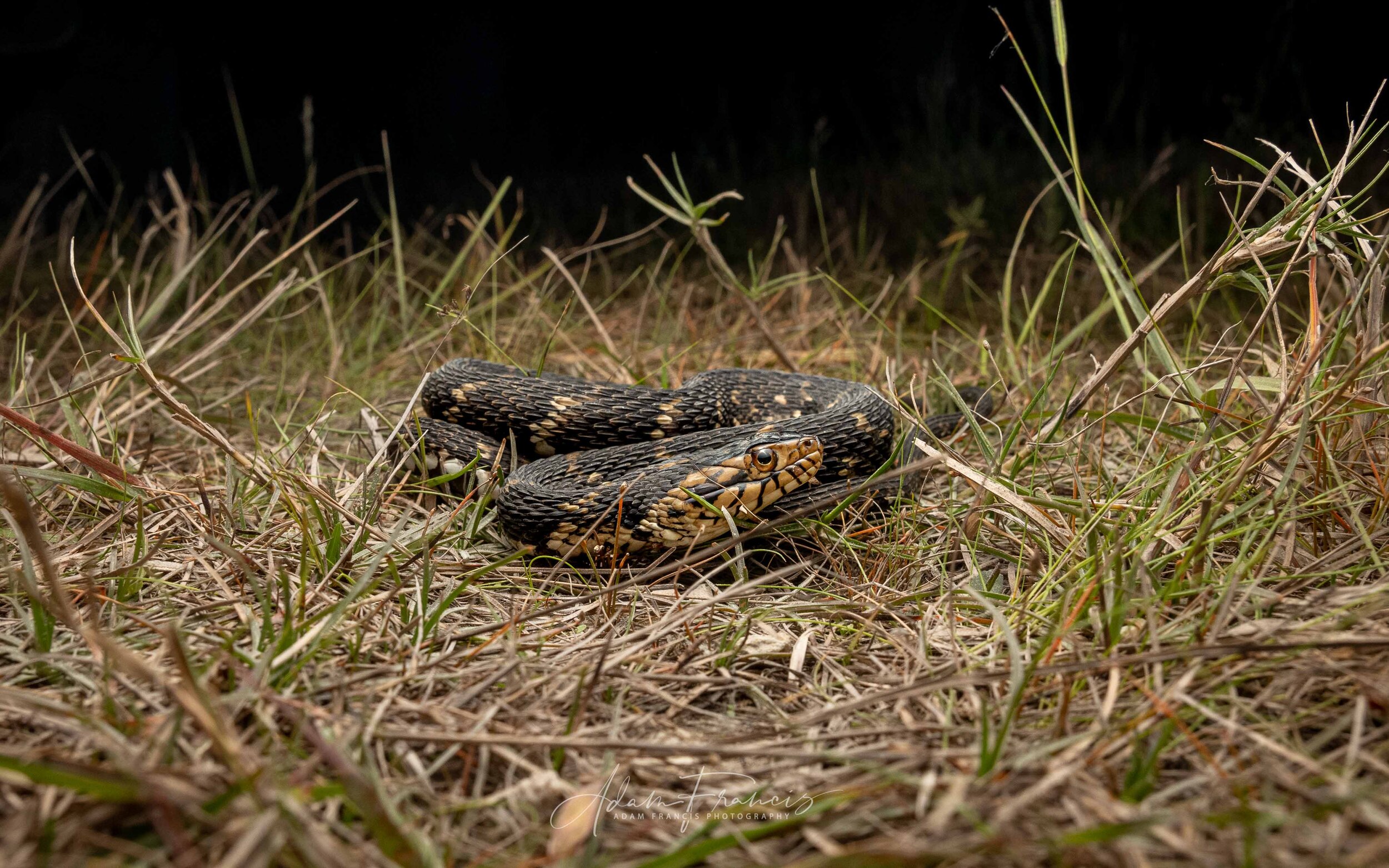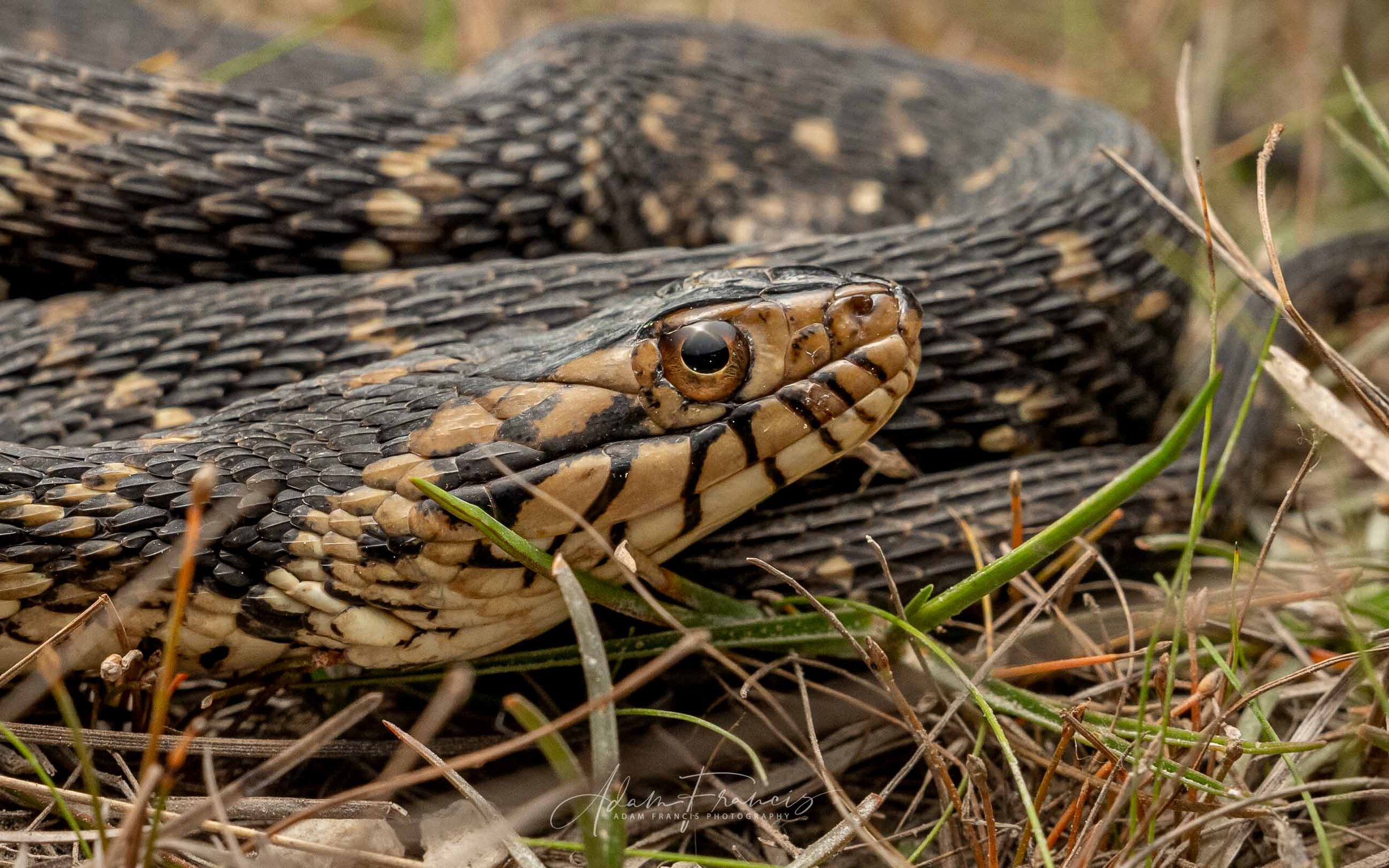SUMMARY
VENOM: N/A
PREVALENCE: Common
ACTIVE PERIOD: Active day and night
KEY ID FEATURES: Tan to green with dark brown or reddish saddle markings, long head and medium body
BEHAVIOR: Active hunting predator, acquatic hunter of fish, frogs and other animals, agressive defensive displays including flattening head, biting and musking
SIZE: Medium 60-90cm
IUCN: LC - Least Concerned
QUICK ASSESSMENT 0-10




DESCRIPTION
Non-venomous. Variable in color and pattern but generally tan to olive green in color with dark brown or reddish jagged saddles running the length of the body. Head is long and narrow with proportionally sized eyes and black edges along each of the scales around the jaw. Head color is dark on top, similar in color to the body. Tail is dark in color and relatively short. Low and high contrast individuals can be found.
BEHAVIOR
Active day and night, though bleived to be largely diurnal. Banded Water Snakes are found in and around slow movnign bodies of water and thought to feed largely on acquatic animals like frogs and fish. They are also well known for defensive displays including flattending of the head, musking, defacating and biting. Capable of diving under water, snakes from the genus Nerodia are often found dving into swamps, rivers and ponds to avoid predation and to hunt for meals.
HABITAT
Found at low elevations in and around slow moving bodies of water at warmer latitudes in North America. Banded Water Snakes will take up residence in mamal burrows and old logs by water sources often laying out in patches of sun to thermal regular and coiling in tall grass or on the banks of ponds and slow moving rivers. Especially common in swamps but also occur in developed areas around rivers and ponds.
MISTAKEN IDENTITY
NO SNAKE SHOULD EVER BE HANDLED BY ANYONE BUT EXPERTS: The snakes in the Nerodia genus can easily be confused with several other species of harmless water snake and venomous species especially those from the Agkistrodon genus i.e. Cottonmouths. Nerodia can occur with very low pattern in which case they are almost indistinguishable from various Agkistrodon to the untrained observer. No brown/black snakes found by bodies of water whould ever be approach or handled as a result and instead observed from a distance.

